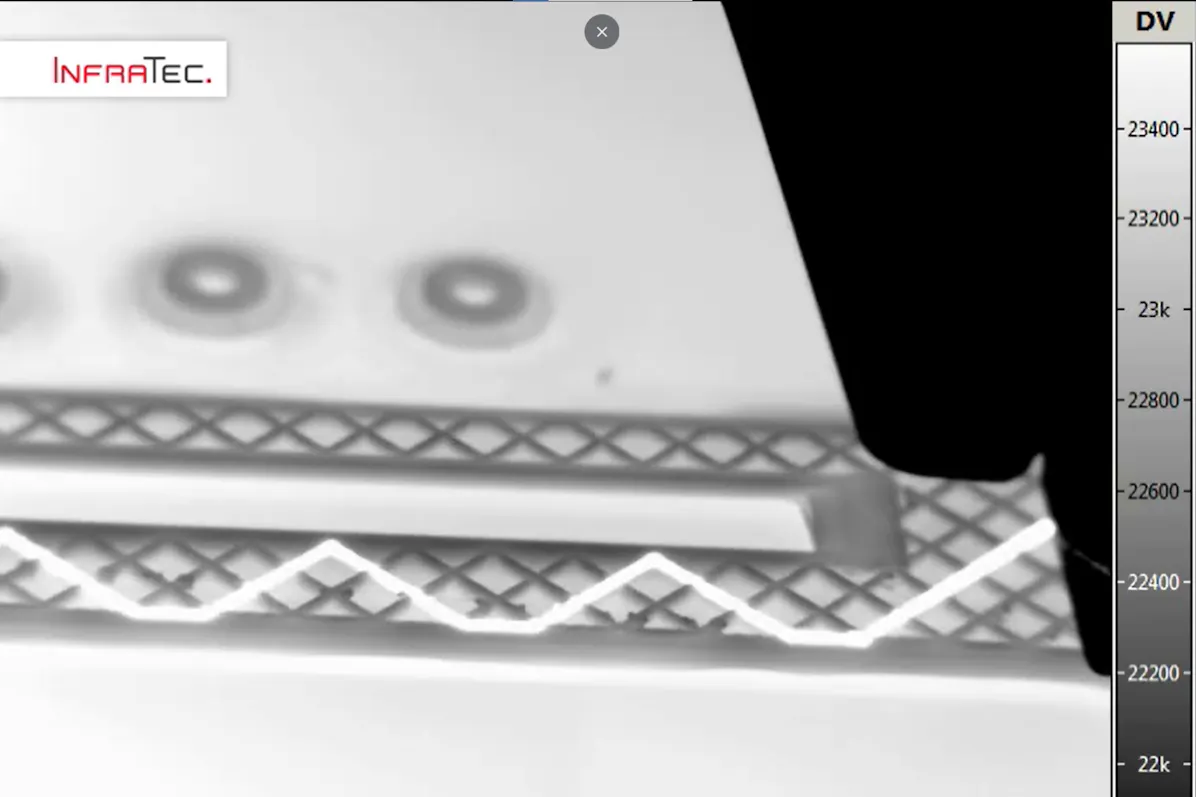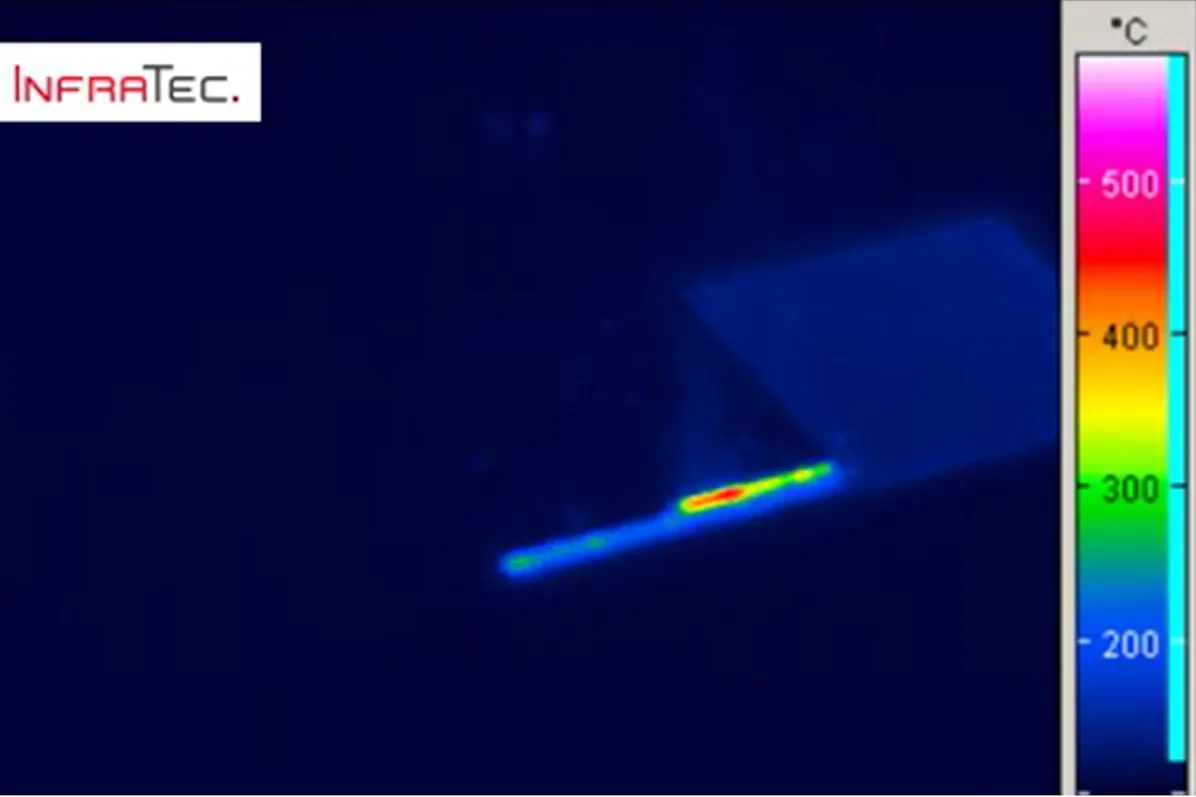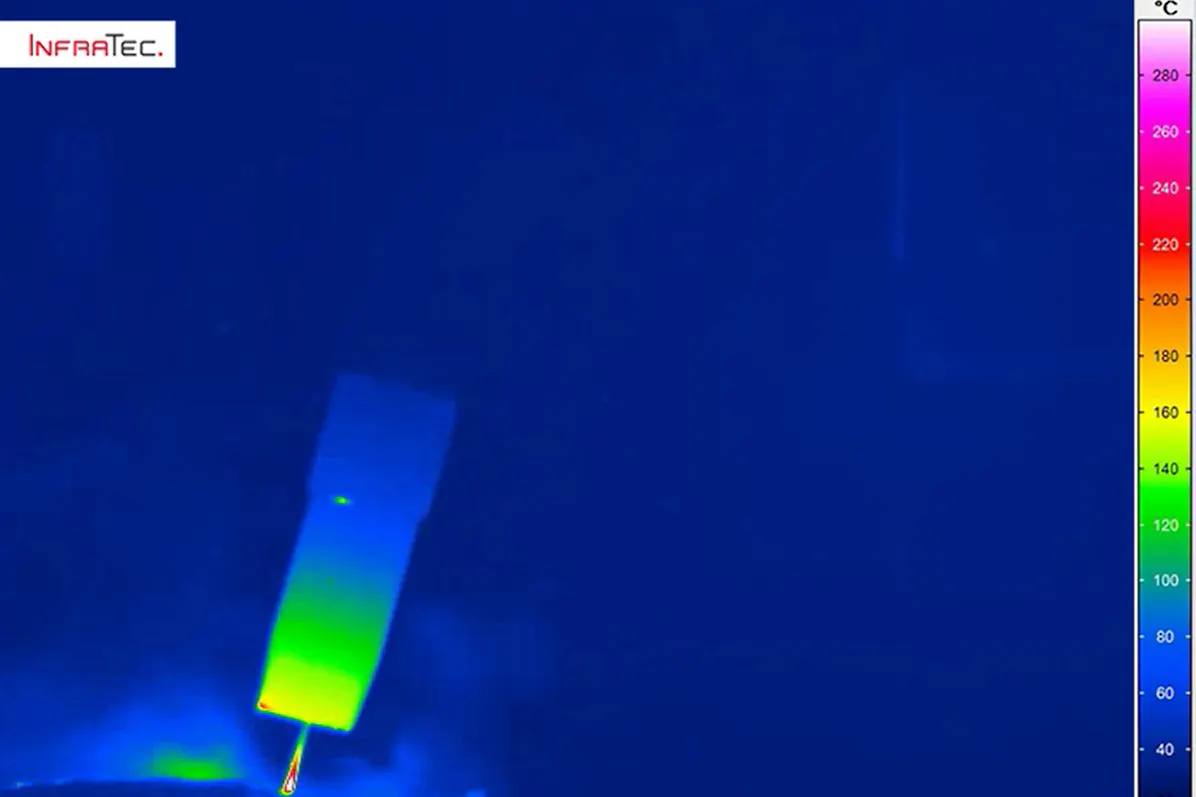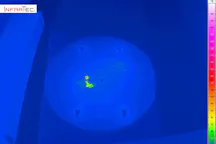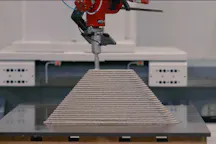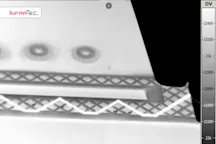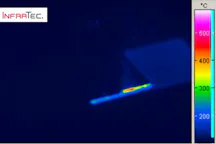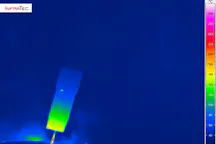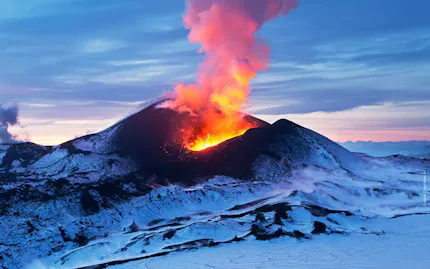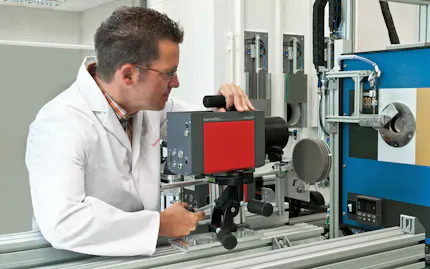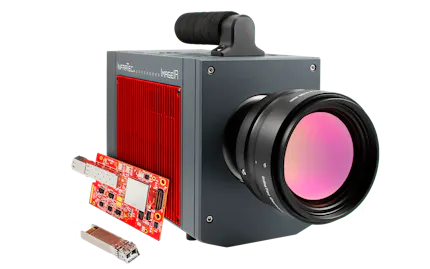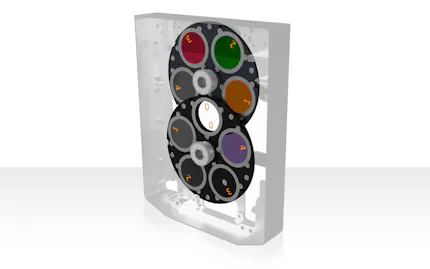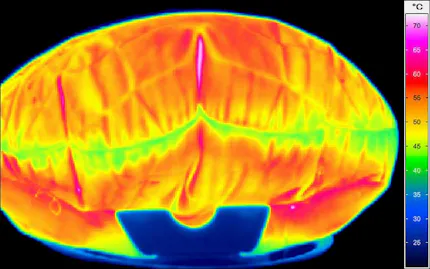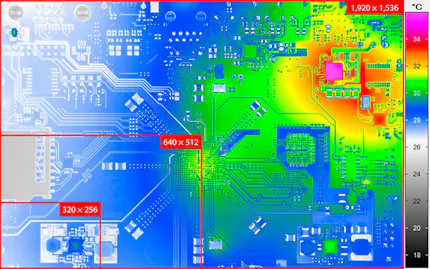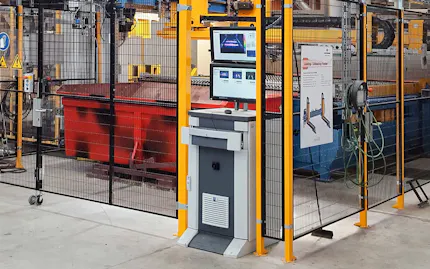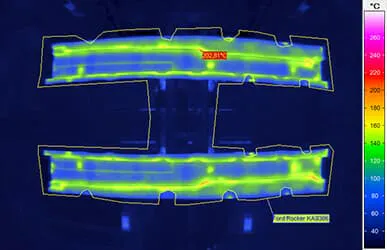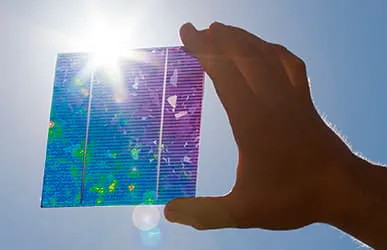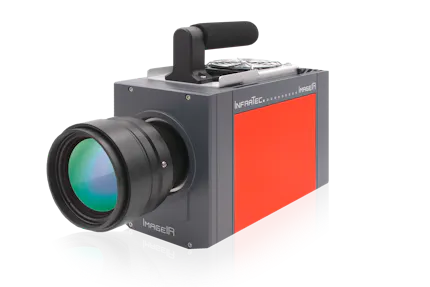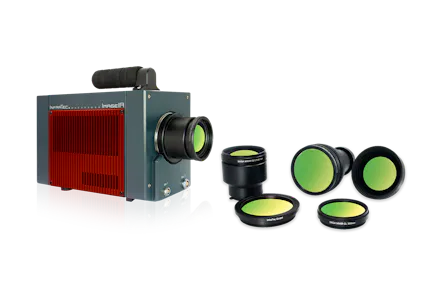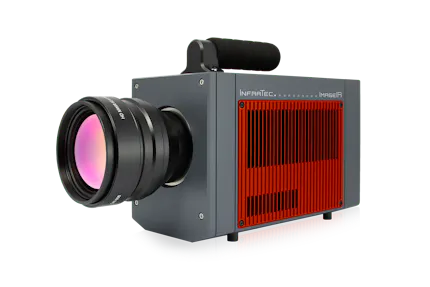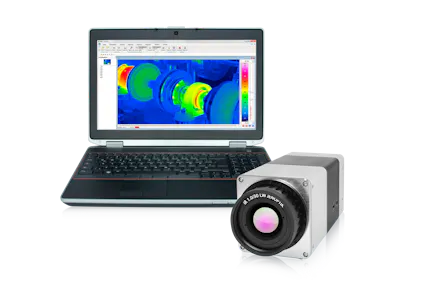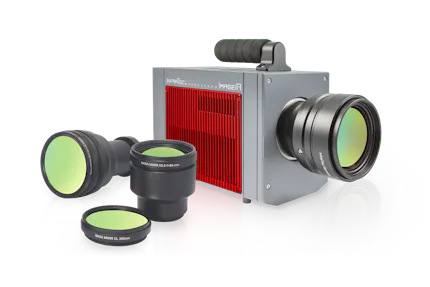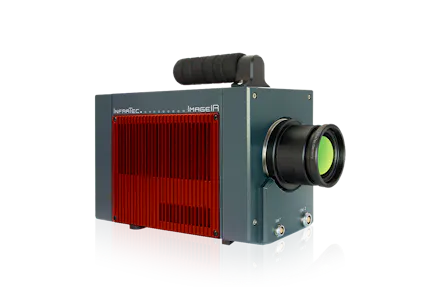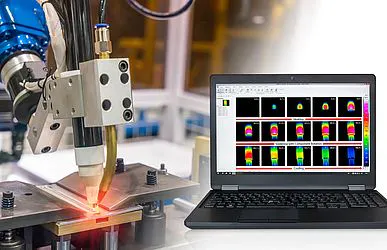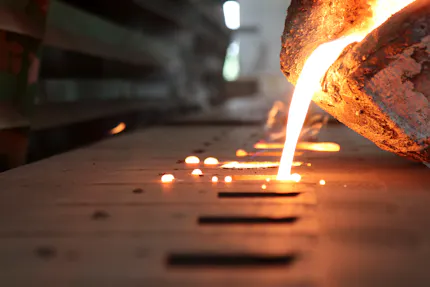High-Speed Thermography in Additive Manufacturing
In additive manufacturing, temperature is one of the factors on which the quality of the final product depends. Thermal imaging cameras record temperature developments and deviations in real time and enable rapid intervention in the ongoing process.
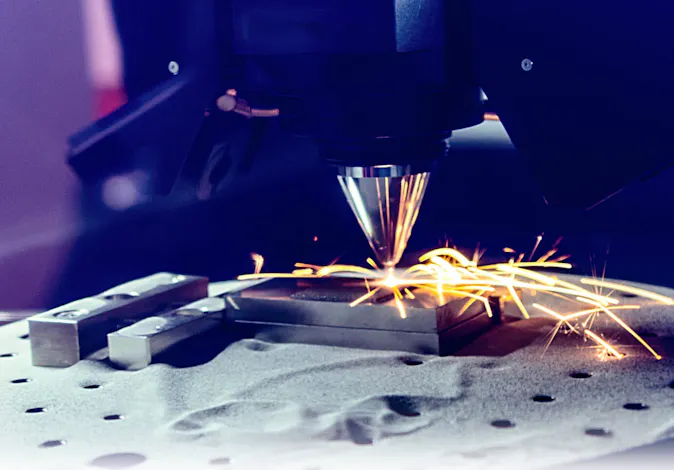
Monitored Process Control and Quality Assurance
Additive manufacturing – also known as 3D printing – refers to manufacturing processes in which material is applied layer by layer to create three-dimensional objects. Thereby chemical and physical hardening and melting processes take place, in which temperature plays a decisive role. Infrared cameras support the systematic monitoring of the entire manufacturing and machining process.
Numerous of these manufacturing processes are based on laser technologies such as laser melting, sintering or build-up welding. Other processes, such as binder jetting, are completed by a sintering pass to fully cure the material. Temperature also plays a decisive role in thermal spraying for achieving the best possible surface hardness and optimum non-stick properties. In order to localise and detail thermal conspicuities in these processes, InfraTec infrared cameras support the determination and subsequent adherence to thermal process parameters by in-line monitoring. Infrared cameras can be integrated directly into the process control system to enable a non-contact and non-invasive temperature measurement.
Here, the detection of the temperature distribution of the powder bed surface and the measurement of melting temperatures are relevant in most cases. Both can be realised for temperature ranges higher than 2,000 °C and while the laser is working (insitu measurement).
Close monitoring of machines, processing plants, materials and temperatures during the production and processing of additive parts is of fundamental importance both in industry and in research. The mapping of heat flows in components is necessary for a complete understanding of the process and allows precise control of the temperature development in the parts and materials to be processed as well as exact thermal control of the process. An early detection of errors in production is therefore possible, rejects are actively avoided, and returns are minimised.
Furthermore, process and cycle times can be significantly optimised and correlations between process parameters and (melting) temperatures can be derived.
Optimising Additive Manufacturing Technologies Using Thermography
Additive manufacturing: definition, benefits, types, presence and future
Fields of application for thermography in additive manufacturing
Challenges in additive manufacturing of metals
Use of thermography to improve manufacturing technologies
Technical requirements for IR cameras in additive manufacturing
"Influence of Laser Intensity Distribution on Process- and Parts Properties in the L-PBF – New Process Insights through Thermography"
Speaker: Dr.-Ing. Florian Eibl, Aconity 3D GmbH
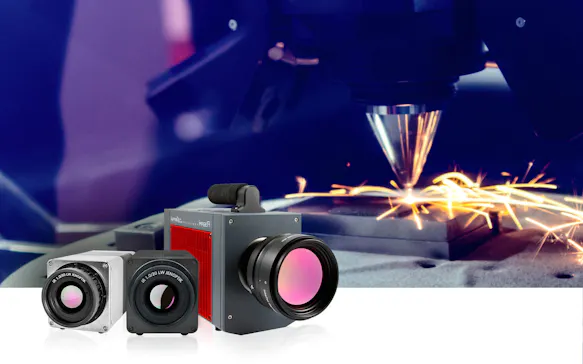
Thermography and Digital Image Correlation – A Winning Team in the Materials and Components Testing Field.
Active thermography for non-destructive testing
Synchronizing high-tech sensors: ZEISS/GOM ARAMIS and infrared cameras from InfraTec
Tracking of temperature on homologous points in 3D space
Applications in materials, components and electronic testing

Requirements for Infrared Cameras in Laser Based Additive Manufacturing
Due to the characteristics of lasers in additive manufacturing, the infrared cameras used must meet specific requirements. This applies, for example, with regard to the temporal resolution.
Working with a laser is typically characterised by short laser action times, where heat input takes place within fractions of a second. This requires measurements with high image frequencies in full and partial images. Particularly in micro material processing with pulsed laser light, the demands on thermography systems are very high. Suitable for this application is, for example, the ImageIR® 8300 hs, as it can image high-speed processes with an image format of (640 × 512) IR pixels and the high image frequency of 1,004 Hz.
The thermal and geometric resolution of infrared cameras is equally important. Depending on the process and material, lasers can be used to create very large or very small temperature differences, which must be monitored continuously and very precisely. Here InfraTec offers different camera functions, such as HighSense mode, HDR function, HighSpeed mode and geometric resolutions in the HD range.

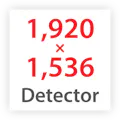
Efficient measurement of smallest structures on large-scale objects

Precise detection of smallest temperature differences
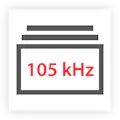
Analysis of high-speed dynamic temperature changes and processes
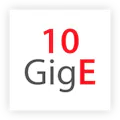
Transmission and storage of large amounts of measurement data on a computer in very short time
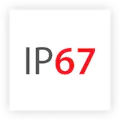
Constant excellent optical and metrological performance even in harsh industrial environments
Thermal Videos about Additive Manufacturing
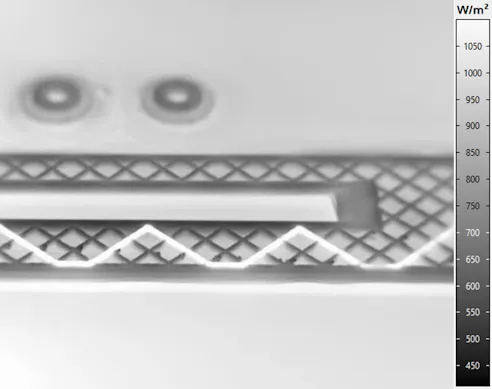
Reliable Localisation and Detailed Mapping of Thermal Anomalies
By in-line monitoring of thermal process parameters, infrared cameras from InfraTec support the optimisation of additive manufacturing processes.
Non-contact and non-reactive temperature measurement
Mapping of heat flows in components to gain a complete understanding of the process
Precise control of heating and cooling of the materials to be processed
Monitoring of defined energy inputs and reduction of thermal load
Precise thermal and even spatial control of the process due to high-speed data acquisition, high geometric resolution and delay-free triggering
Complete recording, documentation and evaluation of temperature distributions to determine the optimum energy input by the laser

Would You Like to Know More?
It is not unusual for tasks to be associated with special requirements. Discuss your specific application needs with our specialists, receive further technical information or learn more about our additional services.
Overview of InfraTec Services
Cooled and uncooled high-end thermographic cameras for the solution of complex tasks
Various detector formats with up to (2.560 × 2.048) IR pixels and wide temperature measurement ranges
Modular design for optimal adaptation to the measurement and test situation (also OEM solutions available)
Complete range of precision interchangeable lenses with first-class transmission quality
Integrated solutions including accessories and software for R&D and process control
First-class service to ensure high system availability
Innovative measurement technology with more than 25 years of expertise
Download Flyer Additive Manufacturing
Get all the information you need at a glance in our product flyers





